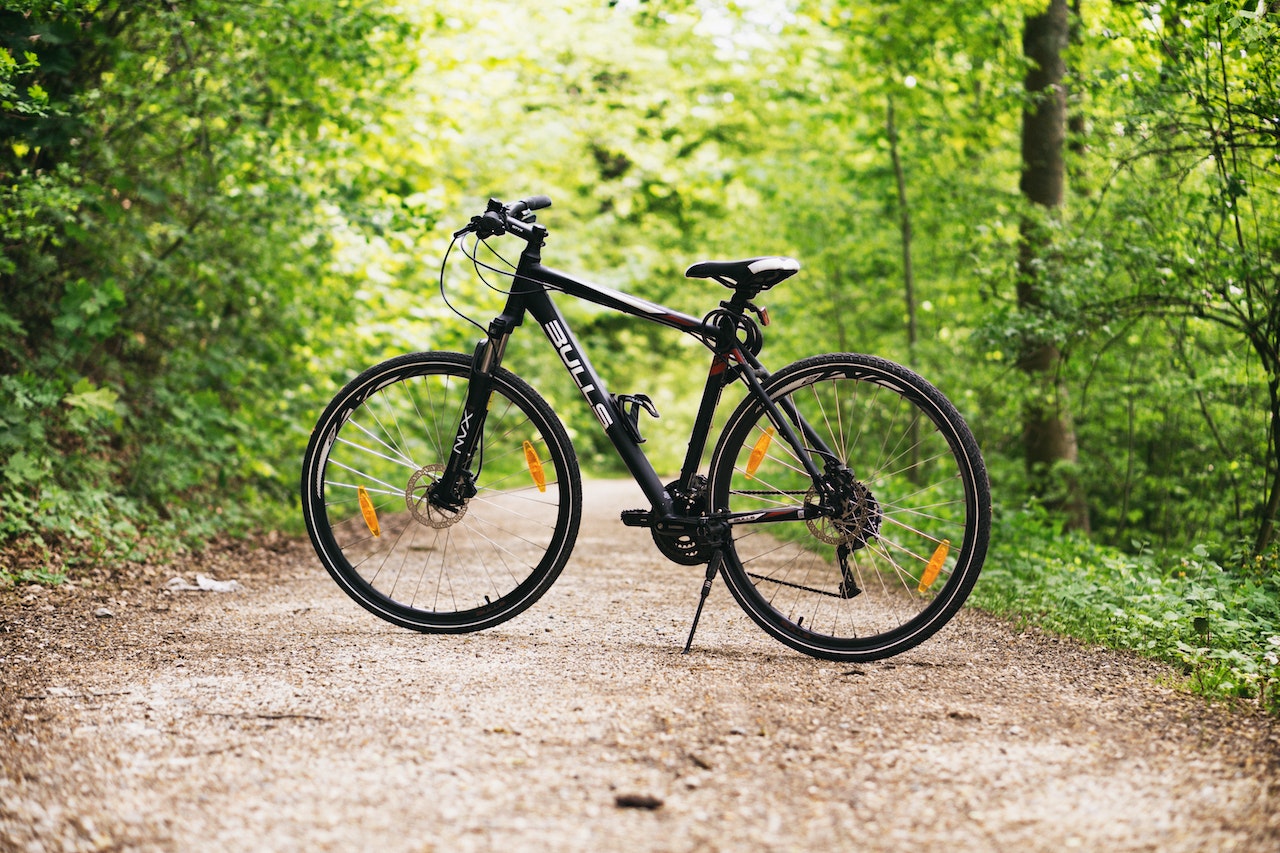Are you ready to take your mountain biking to the next level, but not sure which bike is right for you? Choosing the best mountain bike can be overwhelming, with so many different types and features to consider. In this article, we’ll help you understand the key factors to consider when selecting a mountain bike that’s perfect for your needs and riding style. By the end, you’ll have a clear idea of how to choose the best mountain bike for you.
Assessing Your Skills and Terrain
Before you choose the right mountain bike for your needs, it’s essential to assess your skills and the kind of terrain you plan on riding. This will help guide you in deciding on a bike type and will ensure that you pick the best mountain bike for your experience level and the terrain you plan on biking.
Assessing Your Skills
If you’re a beginner mountain biker, you’ll want a bike that is easy to handle and isn’t too complex. Look for a mountain bike with a lighter frame, low-end components, and tires designed for smoother trails. As you become more experienced, you can upgrade your pieces and try more challenging routes.
Assessing Your Terrain
The terrain you plan on mountain biking will dictate the type of mountain bike you need. If you plan on tackling gentle hills and smoother trails, look for a hardtail mountain bike with suspension limited to the front wheel. If you’re planning to ride on more rugged terrain, you’ll want to look for a full-suspension mountain bike with dual suspension and wider tires.
When choosing the right mountain bike for your needs, assessing your skills and terrain is essential. Be honest with yourself and your biker level, and choose a mountain bike suitable for your experience level and the terrain you plan on riding.
Analyzing Different Types of Mountain Bikes
Whether you’re a seasoned mountain biker or just starting, choosing the right mountain bike for you can be challenging. To help you select the ideal cycle for your needs, it’s essential to understand the different types of mountain bikes available and the features they offer.
Cross Country Mountain Bikes
Cross-country (XC) mountain bikes feature lightweight frames and narrow tires for singletrack trails. They are typically unsuspended or equipped with a hardtail design featuring a front suspension fork. This bike is ideal for long-distance rides and climbing up steep hills.
Trail Mountain Bikes
Trail mountain bikes are made for more technical terrain. They feature full suspension with both a front and rear suspension fork and wider tires for increased traction. This bike is excellent for riding rocky trails and is also suitable for technical descending.
Downhill Mountain Bikes
Downhill mountain bikes are built to go fast and handle harsh terrain. They have a full suspension with a long travel fork and increased shock absorption. This type of bike is excellent for downhill racing and freeriding.
Fat Bikes
Fat bikes are designed for extreme terrain and feature four inches or wider tires. This type of bike is designed for snow, sand, and muddy trails and can also be used for touring.
Understanding Bike Features and Components
Riding a mountain bike can be a delightful experience, and one of the best parts of it is the thrill of tackling challenging terrain. Whether you’re an experienced biker or just getting started, understanding a mountain bike’s various features and components is an essential step in making sure you choose the right one for your needs.
Frame Material
The frame of your mountain bike is arguably the most critical component, as it’s the foundation upon which all other parts are built. The frame is traditionally made from either aluminum or carbon fiber, each with advantages and disadvantages. Aluminum frames are generally more affordable and stiff, which makes them ideal for lighter cross-country riding. In contrast, carbon fiber frames are more expensive and provide more compliance, making them ideal for aggressive downhill riders.
Wheels and Tires
The type of wheels and tires you choose for your mountain bike will significantly impact its performance. A 29er wheel fits larger tires, providing more traction and stability. Wheels with wider rims also tend to be better for downhill riding. Tires come in various sizes and compounds, and selecting the right one for your needs is essential for the best performance.
Suspension
Suspension plays a massive role in the performance of a mountain bike. Complete suspension bikes offer a more comfortable ride and better terrain control, but they’re heavier and more expensive. Hardtail bikes are less expensive and lighter, but they’re not as compliant when tackling rough terrain.
Groupset
Your bike’s groupset comprises components, shifters, brake levers, and other features. Low-end models typically have an introductory groupset consisting of primarily plastic pieces, while higher-end models have better parts. Choosing the correct groupset is essential for optimal shifting performance and overall durability.
Considering Your Budget
When choosing the right mountain bike for your needs, it’s essential to consider your budget. Mountain bikes come in various price ranges and styles, so you must clearly know what you are looking for and how much money you are willing to spend before you start shopping.
Budgeting Tips for Buying a Mountain Bike
- Set a budget and a maximum price you are willing to pay.
- Compare prices of different models to find the best value for your budget.
- Check out user reviews online to get an idea of the quality and performance of different models.
- Look for discounts from bike shops or online vendors.
- Be prepared to invest in quality – it will save you money in the long run.
It is important to remember that mountain bikes can range in price from a few hundred dollars up to several thousand dollars. The most crucial factor in choosing the right bike is buying one that fits your budget while still offering the features and performance you need.
Taking a Test Ride
Before you buy a mountain bike, it’s essential to take a test ride to ensure it meets your needs. Taking a test ride is the best way to determine if the bike fits you correctly and if you are comfortable riding it.
Choose the Right Bike for Test Riding
To start the process of test riding, you should know the type of mountain bike you want. Consider the type of terrain you will be riding, how experienced you are and your budget. Once you have this information, you can narrow your choices and begin the test ride process.
Finding a Place to Test Ride a Mountain Bike
If you are buying online, some retailers offer the possibility of using their test ride program. These programs usually allow you to try the bike at home, in a nearby parking lot, or at a local bike shop.
When testing a bike, it is essential to check the brakes, suspension, and drivetrain to ensure they work properly. Additionally, it’s necessary to consider the bike’s geometry and how it fits your body.
Ensure You Are Comfortable During the Test Ride
You must be comfortable during your test ride. Consider the terrain you’ll be riding and the riding you plan to do. Test the bike on different surfaces and learn how it responds. Additionally, think about the features offered and how they can help you.
Make Sure You Choose the Right Mountain Bike for You
Test riding a mountain bike is the best way to ensure you choose the right mountain bike. Consider the terrain, features, and fit when evaluating a mountain bike. Additionally, ensure you are comfortable and that the bike performs how you expect it to. Taking a test ride is the best way to ensure you make the right decision.
Maintenance and Upkeep
Maintenance and upkeep are essential when choosing the right mountain bike for your needs. Having the right mountain bike for your needs means that it has to be in working condition all the time. This requires proper maintenance and upkeep, such as regular cleaning and lubrication, calibrations, and repairs.
Regular Cleaning and Lubrication
A mountain bike is exposed to dirt, grime, and moisture, and as such, it needs to be regularly cleaned and lubricated to maintain its performance and durability. Cleaning your mountain bike is vital and should never be overlooked. Make sure to clean your bike after each use, especially after riding in wet or muddy conditions. It is also essential to use suitable lubricants to keep the bike’s chain and other moving parts in good condition.
Calibrations and Repairs
Proper calibrations and repairs are essential to keep your mountain bike in optimal condition. Before heading out on a ride, ensure that all brakes and gears are in good condition and properly calibrated. Also, ensure that the suspension, handlebars, and tires are in working order. If you find that any of these components are not functioning correctly, then repairs should be done by a qualified bike mechanic.
Following these maintenance and upkeep tips, you can keep your mountain bike in tip-top shape for an enjoyable and safe ride. When choosing the right mountain bike for your needs, make sure to consider the maintenance and upkeep costs as well as the cost of the bike itself. Taking proper care of your mountain bike will ensure you get the maximum enjoyment out of your ride on the trails.
Conclusion
To choose the right mountain bike for your needs, it’s important to understand the different types of mountain bikes available and the features each one offers. This will allow you to make an informed decision and select a bike that is tailored to your riding style and terrain. It’s also crucial to consider the frame material, wheels and tires, suspension, and groupset that will work best for you, as this will help ensure you have the best possible experience on the trails.






Thanks for explaining how a bike with wider tires is best for rugged terrain. My best friend has become interested in mountain biking this year, and she wants to buy her own bike. She prefers terrain that is rugged, so I’ll make sure she chooses a bike that has wide tires as she looks for one this month.